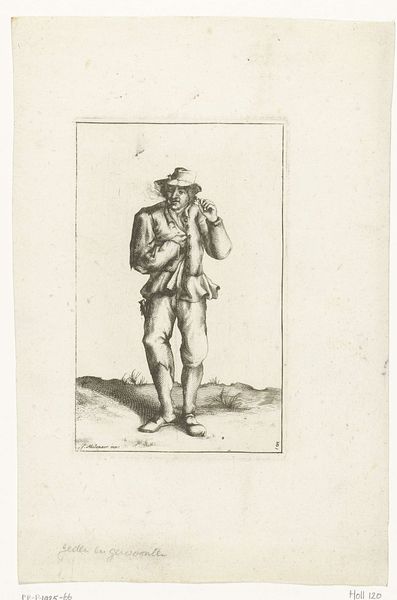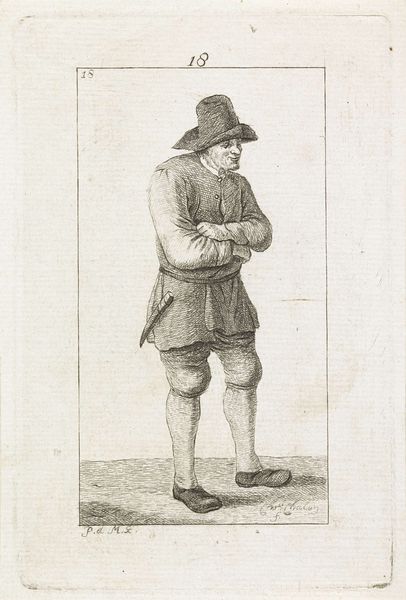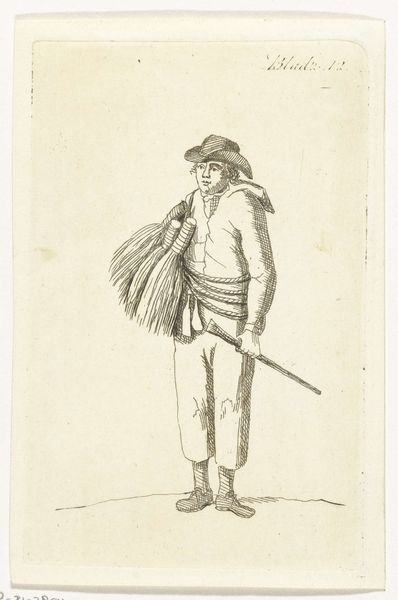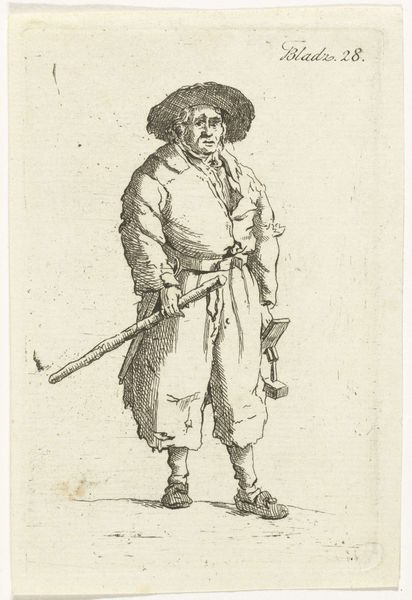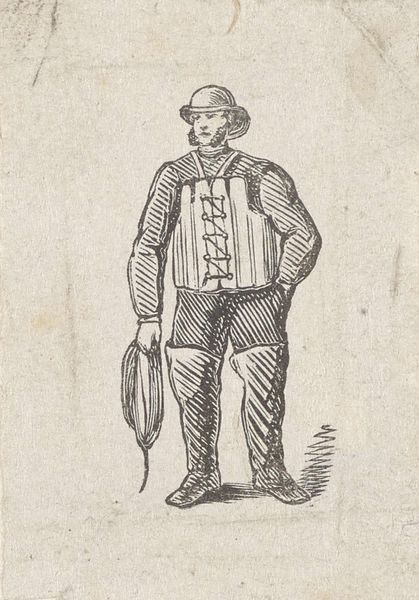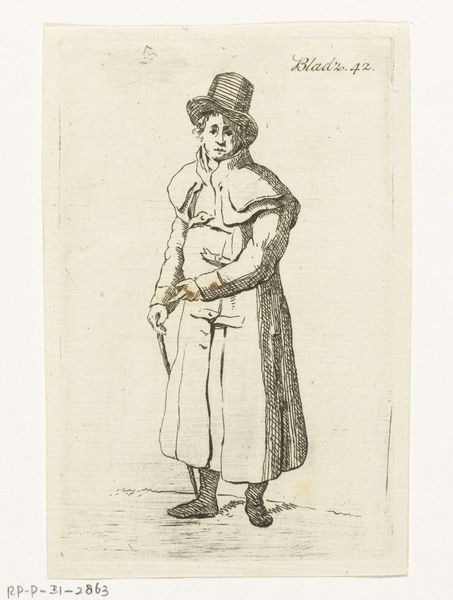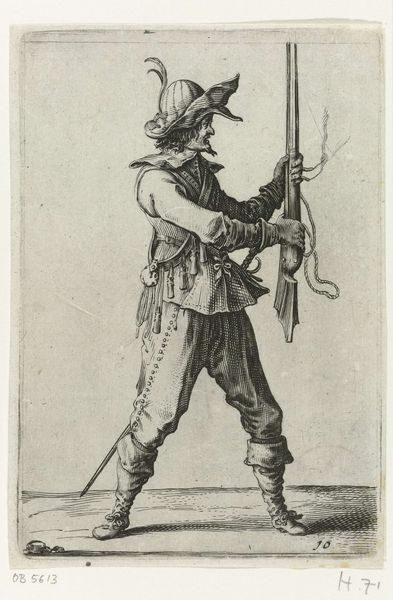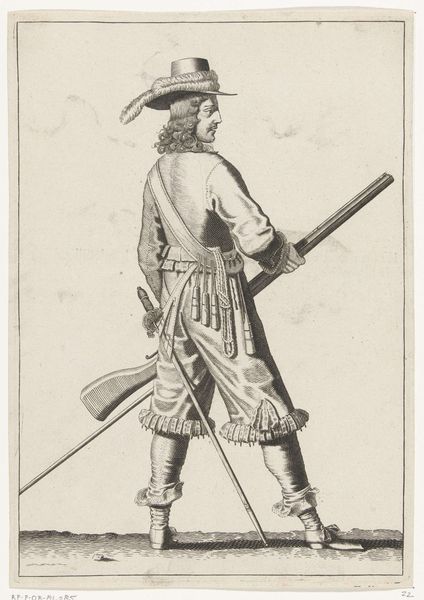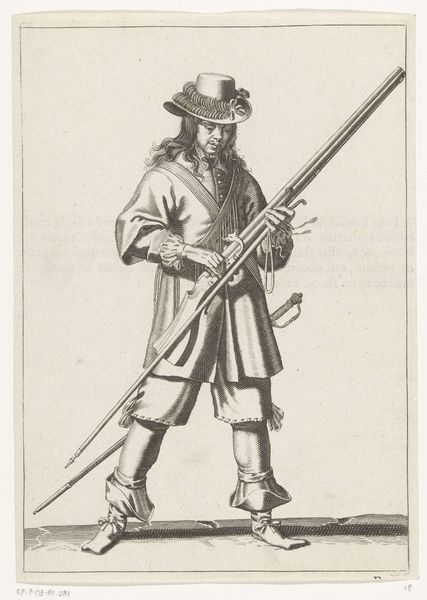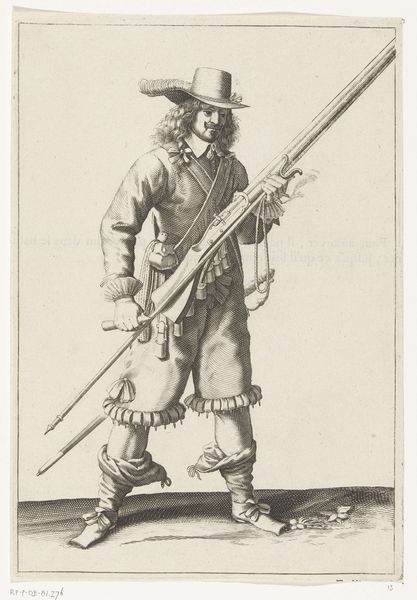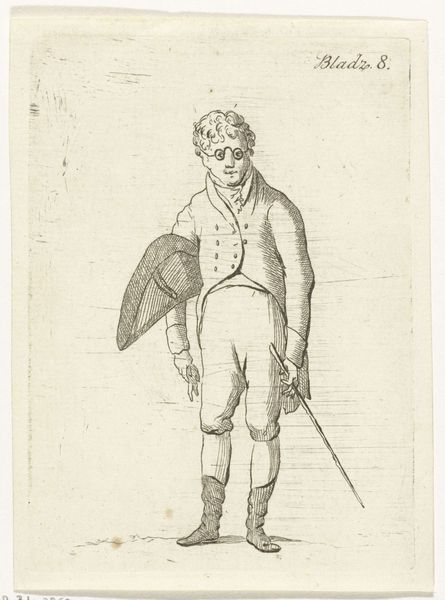
engraving
#
portrait
#
neoclacissism
#
figuration
#
engraving
Dimensions: height 199 mm, width 131 mm
Copyright: Rijks Museum: Open Domain
Curator: Welcome. Today, we're looking at a fascinating engraving from between 1791 and 1793, attributed to Pieter de Mare: "Hugo de Groot in metselaarskleding," held here at the Rijksmuseum. What are your immediate impressions? Editor: Well, it's a somewhat curious portrait, isn't it? The subject looks... less dignified than one might expect. There's a certain groundedness about him. It feels almost deliberately ordinary. Curator: Precisely! De Groot, famously escaping prison in a bookcase, is here depicted in relatively plain clothing holding a long, inscribed staff. It presents an intriguing divergence from the more standard heroic portraiture one might expect. Editor: The choice to show him with this Masonic symbolism feels quite subversive. By the late 18th century Freemasonry held significant influence across social strata. Depicting a national hero like de Groot, someone celebrated in national narratives as a pioneer of international law, is loaded with contemporary social commentary. Curator: And yet, stylistically, it adheres to Neoclassical conventions. The clear lines, the emphasis on form, even the composition itself, place it firmly within that artistic movement. The focus seems to be shifted toward celebrating this man by presenting a vision of order and reason. Editor: A revolutionary application of portraiture when viewed from the point of view of the revolution fermenting across Europe and, given its potential for wider distribution as an engraving. And it feels quite radical in this focus on the everyman too. Hugo's far from a 'de'. This representation in relatively ordinary clothing normalizes this legendary man of jurisprudence to a citizen for the people and ready to serve them. Curator: He is the model for every good man who serves others, quite right. The lack of embellishment reinforces an image of utilitarian virtue and egalitarian values and in an intellectual icon who, no matter their origins, can pick up the tools to enact the rights of citizens for all. Editor: It speaks to a time of social and political upheaval, where identity and belonging were in flux, but the revolutionizing values are quite apparent through an anti-monarchist symbolic portrait of a good common man, serving the good of the people through building the groundwork to give all access to the laws of men. Curator: A subtle yet compelling reminder of how art engages in social dialogue. Editor: And a testament to the power of art to capture these tensions, revealing the multiple facets of any identity, and the revolutionary context for identity to come to fruition.
Comments
No comments
Be the first to comment and join the conversation on the ultimate creative platform.

